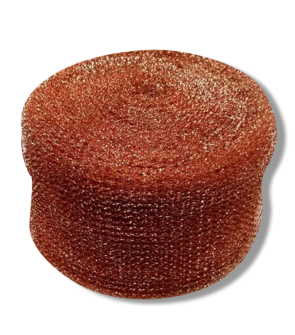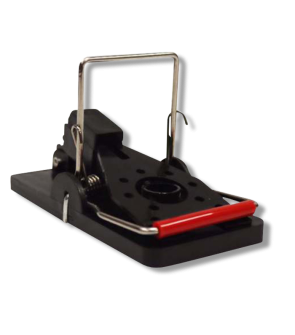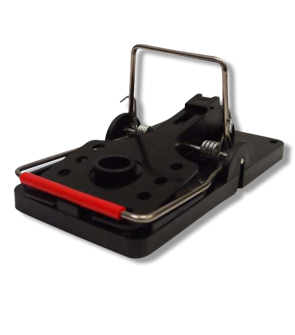Integrated Pest Management: How and When to Use IPM to Manage Pests
Most Effective Products
Integrated Pest Management: How and When to Use IPM to Manage Pests
This page is a professional guide on preventing pests such as rodents, animals, or insects from coming into or around your home through integrated pest management practices. Follow this guide and use the recommended products to completely control future activities by unwanted pests with the knowledge of integrated pest management.
At some point or another all homeowners run into some form of pest issue. Whether it be past or recent visits from household pests such as roaches, rats, mice, ants, or fleas can cause any homeowner to look into preventative ways for these pests. Even though pests are not encountered it does not mean that the homeowner will not eventually run into them at some point.
For apartment and homeowners, we recommend regular integrated pest management practices on a quarterly, or even weekly basis. General pest management allows you to reclaim your home and prevent costly damages. To best protect your property, and family against the various pests that arise each season, turn to the information about integrated pest management in this DIY guide.
What is Integrated Pest Management and It's Goal
Integrated pest management or otherwise known as general pest control or IPM is a holistic approach in pest control that uses a range of prevention and monitoring practices for diseases, insects, or animals in and around your property.
Targeting pests in a variety of ways greatly increases the results with pesticide products and the over-use of them. However, pesticides can complement other control methods when used as part of an integrated pest management program.
By learning about which pests are most common during the season, what pests are dependent upon, and their life cycles you can manage them with the most appropriate methods to improve control, lower damage and pesticide costs, and reduce risk to your family, pets, and plants.
The goal of an integrated pest management is to prevent pests such as rodents, animals, or insects from reaching economic or aesthetically damaging levels with the least amount of damages done to the environment.
Benefits of IPM
Integrated pest management provides a strategy for protection against a variety of pests that is effective, in line with modern practices, and factoring in potential pesticides to use to help lessen the amount applied in the future, all the while preventing exposure to your family, pets, and non-target wildlife.
Besides economic sense, using an integrated pest management can also help reduce pesticide resistance in pest populations.
What Are the Steps to Integrated Pest Management
To be successful, integrated pest management must be based on identification of pests, measurement of their population size, assessment of damages, and understanding available pest management strategies.
Step 1: Identify
Proper integrated pest management begins with gaining an understanding of the pests currently and commonly found in and around your property. From animals, insects, slugs, to snails each pest has its own behaviors and habits. Knowing these factors can help arm yourself with the proper tools to prevent these pests.
Important questions to ask yourself when dealing with an unknown pests are:
- Is it indoors or outdoors?
- Is it seasonal or year-round?
- Is it a regional pest or located nationwide?
If unsure of the pest infesting your property, contact us through phone, email, or in-person at one of our store locations with either a photo or sample of the pest in a sealable plastic container. Being either of these items to one of our stores, where we can try to assist you with proper identification and recommended treatment control.
Step 2: Monitor and Evaluate
Before attempting to eliminate pests, its best to monitor the population for some point of time. By doing this, you can determine the size of the population and where the pests can be found to focus your treatment control efforts. These actions can also help to eliminate the conditions and attractants needed for the pest to survive.
In certain situations, you may find that on-going treatment is needed since certain pest populations can continue to arise. Most of the time this is because the pests were not present during the time of application. Depending on the pest, there are certain points in the pests life cycle that is most susceptible to preventative actions.
For example, pests like fleas cannot be controlled in one simple treatment plan. While in the egg stage, the flea is resistant to most pesticides used. Follow up applications and repetitive inspections for conditions this pest needs to thrive has to be consistent until all larvae and eggs are eradicated.
For this reason, homeowners will need to continuously monitor the inside and outside of their home to reduce or even avoid pesticide treatment. They will also need to understand the pests life cycle and basic biology as this can determine what type of treatment or preventative control to follow.
Step 3: Determine Action Thresholds
An action threshold is the boundary between tolerable and intolerable damages done by the pest and the point that pest control must be taken. Homeowners or professionals should make these rules based on their own assessment. More specifically, some homeowners can tolerate some level of a pest presence, but thresholds in more professional settings such as restaurants differ in the tolerance of pests and their damages.
Action thresholds should take into account the pests population sizes, natural enemies, and time needed for control measures to take effect, and more. The action threshold will differ with the type of treatment plan being used.
For pesticides that work quickly, the action threshold may be just before a pest population creates damages. For slower treatment plans, the action threshold should when pest populations are low. Generally, we recommend implementing control when one pest is witnessed or at the first sign of activity.
Step 4: Implement Control Tactics
If pests exceed the tolerance and action threshold, then you will then need to move forward with control tactics. In IPM there are 4 groups of control, which are ranked according to the level of intervention and toxicity levels. These should be implemented starting from the lowest level towards the highest.
The IPM control tactics level begin from cultural, physical/mechanical, biological, then chemical.
Step 5: Evaluate and Document Results
Once a pest infestation has been controlled, record the type of pest infestation, where infestation took place and other areas it was found, placement of products, and the actions taken to help refine your pest control efforts in the future. Additionally, take note of other areas that might support future pest activity. Performing these pest management procedures can help homeowners and professionals in lessening future pest activities.
Methods Used in Integrated Pest Management
Once the decision has been made to control a pest, the homeowner or professional must decide which pest management tool to use. For longer pest control solutions, integrated pest management uses a combination of control methods.
The following are common categories of pest control methods under integrated pest management:
Cultural Control
Cultural control refers to the method of changing the environment or condition of the host plant with the aim of preventing or discouraging the pests presence. This is done to remove the basic requirements needed for the pests to survive such as water, food, and shelter. Some of these practices can be performed on a daily or weekly basis.
This form of control may include removing standing water from your yard, raking fallen leaves and other plant debris, rotation of crops to slow pest population and avoid overwintering or soil-borne pests, and more. Additional measures you can take is to adjust your watering schedule. Water early in the morning with no more than an inch of irrigation per week to avoid overwatering and promote the right amount of nutrients to recover and fight against pests.
Biological Control
Biological control involves the use of other animals or insects that are natural enemies to certain pests. This method is commonly used by individuals to naturally get rid of pests through predators, pathogens, or parasitoids without harming desired foliage.
This form of control can be difficult to implement since not every pests has harmless predators associated with them. It is imperative to correctly identify your pest, otherwise the biological route could lead to more damages and another infestation to control.
Mechanical/Physical Control
In contrast to preventative measures, mechanical and physical control aims to physically remove the pests or prevent their movement to a specific area. This can be done through equipment, devices like sound repelling machines, traps or vacuums, barriers like screens or sealing cracks and crevices with caulk, pruning overgrown or damaged plants, and mowing.
An example of common mechanical control is the use of snap-traps to eliminate rodents. We recommend using the Easy Set Snap Traps, which is designed with a durable plastic and steel construction for easy cleanup and reuse. Unlike traditional wooden rat or mouse traps, The Solutions Easy Set Mouse Trap or Solutions Easy Set Rat Trap is set at an 90-degree angle which decreases the distance the bar must travel to catch the rat or mouse.
Chemical Control
Chemical control usually refers to the use of pesticides or cleaning agents to kill, control, repel, attract, or manage pests. Pesticides should be used when needed and in combination with other integrated pest management approaches for more effective, long term control.
The chemical selected should be specifically labeled for the pest and applied in the way described on the product label to avoid pest resistance. We recommend using a broad-spectrum insecticide like Supreme IT, which is labeled to eliminate over 70 types of insects. Supreme IT is made with 7.9% bifenthrin and will leave a long-lasting residual that will control and repel pests for up to 90 days.
Determine how much Supreme IT to use by measuring the square footage of the treatment site. To do this, measure the length and width of the treatment area in feet then multiply them together (length X width = square footage). For general pest applications, we recommend 1 fl. oz. of Supreme IT per gallon of water per 1,000 sq. ft.
For spot treatments you will want to use a handheld pump sprayer or a backpack sprayer for a larger broadcast application. Fill your selected sprayer with half the amount of water, then pour in the measured amount of Supreme IT, and fill the rest of the way with remaining half of water. Close the spray tank lid and shake until solution is evenly agitated.
Spray the top and bottom of leaves until wet, but not to the point of runoff. For perimeter treatments, spray 3 feet up the structure and 3 feet out. Next, spray the entry points around the exterior of your home. These entry points can be entryways, window and door frames, openings created by utility pipes, and other openings you may have found.
Keep people and pets away from treated area until dry.
Key Takeaways
How Does Integrated Pest Management Reduce Hazards and Pests?
- Integrated pest management does not provide an immediate solution for pest control, but rather a variety of strategies that requires a patient and consistent plan to fully control and prevent pest infestations. It mainly emphasizes preventative measures to take away the pests source of food and shelter thus eliminating its basic survival needs. Using common sense practices and pesticides, integrated pest management controls the pests at various stages of its life cycle.
When Should an Integrated Pest Management Program Begin?
- An integrated pest management program should begin when the action threshold has been crossed or when pest and its activities has first been noticed.
Examples of Integrated Pest Management
- Common integrated pest management practices that can be done on a weekly or quarterly basis are cleaning out rain gutters, raking fallen plant debris, mowing turf when it reaches a height of three inches, keeping firewood stacked off the ground on a concrete slab or metal rack away from your homes foundation, trimming overgrown tree and shrub branches away from a structures foundation, addressing moisture buildup in yard and home, sealing off pest entry points such as cracks and crevices with caulk, gaps underneath garage doors with thresholds, and larger voids with copper mesh. Indoors this can be maintaining general cleaning practices such as wiping off kitchen countertops with warm water, sweeping and vacuuming the floors, taking the trash out, and ensuring the trash can has a tight fitted lid.















































































































































































































































































































































































































































































































































